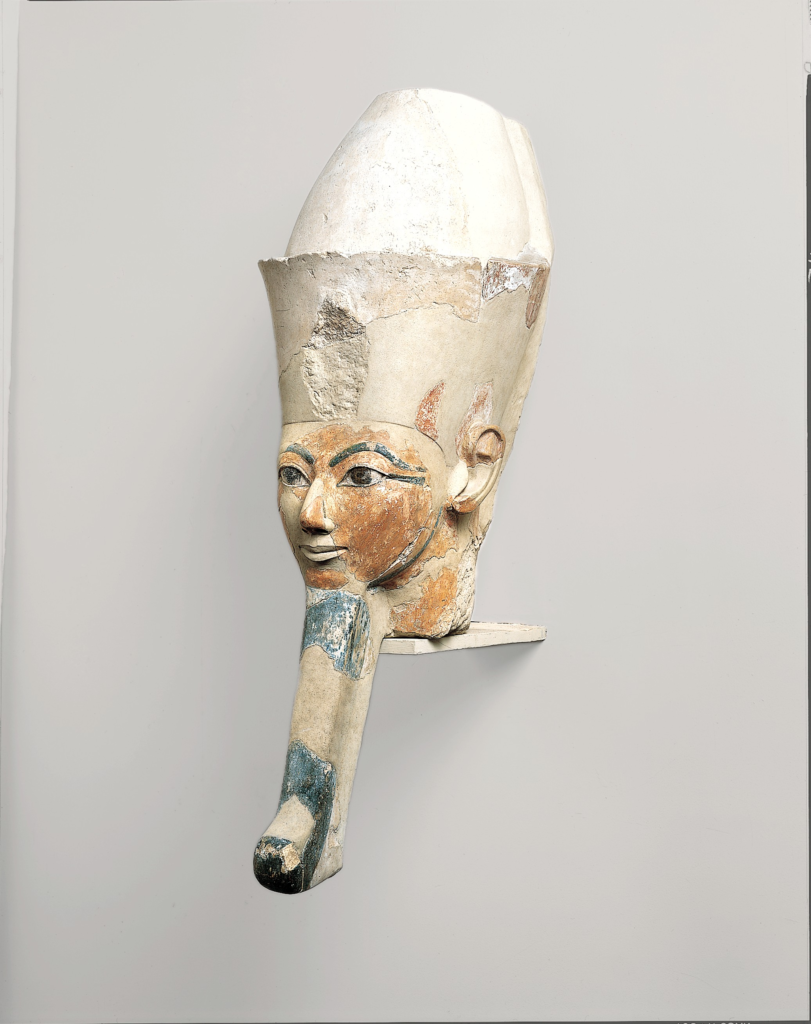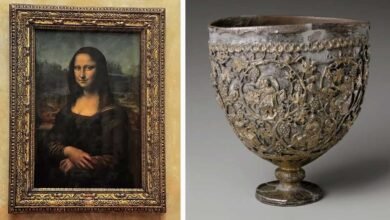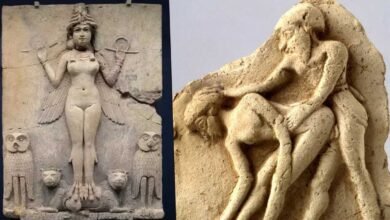The Majestic Osiride Statue Head of Pharaoh Hatshepsut

The Metropolitan Museum of Art is home to an exquisite ancient Egyptian artifact – a sculpted head that was once part of a massive Osiride statue depicting the female pharaoh Hatshepsut. This stunning relic offers insight into Hatshepsut’s reign in the 15th century BCE.

Hatshepsut commissioned an array of impressive monuments and temples during her rule, including a sprawling temple complex at Deir el-Bahri in Upper Egypt. This sandstone head originally adorned one of the Osiride statues that lined the upper terrace of the temple. Carved in high relief, these statues depicted Hatshepsut merged with the attributes of Osiris, the god of rebirth and the afterlife.
The statue head captures the regal essence of Hatshepsut’s reign. She wears the distinguished Double Crown of Upper and Lower Egypt, which signifies her sovereignty over a united kingdom. Her expression is tranquil and meditative. The sculpted lines of her face evoke divine authority and supreme confidence.
As one of the few female pharaohs in ancient Egyptian history, Hatshepsut embraced expressions of power that were traditionally masculine. The Osiride statues reinforced her legitimacy as a king who would maintain ma’at, the cosmic order of justice and truth. She masterfully blended traditional and innovative iconography to transmit her right to rule.
This particular statue head provides a vivid glimpse of Hatshepsut’s adept self-presentation as a monarch favored by the gods. It remains a testament to her visionary leadership and adroit political acumen. The majestic sculpted likeness reflects Hatshepsut’s indelible mark on Egypt’s history as a trailblazing female leader.
Title: Head from an Osiride Statue of Hatshepsut
Period: New Kingdom
Dynasty: Dynasty 18
Reign: Joint reign of Hatshepsut and Thutmose III
Date: ca. 1479–1458 B.C.
Geography: From Egypt, Upper Egypt, Thebes, Deir el-Bahri, Jaw from “Hatshepsut Hole”/rest from Senenmut Quarry, MMA excavations, 1922–23/1926–28
Medium: Limestone, paint
Dimensions: h. 126.5 cm (49 13/16 in); w. 34.9 cm (13 3/4 in); d. 59.4 cm (23 in)
Credit Line: Rogers Fund, 1931
Accession Number: 31.3.164




